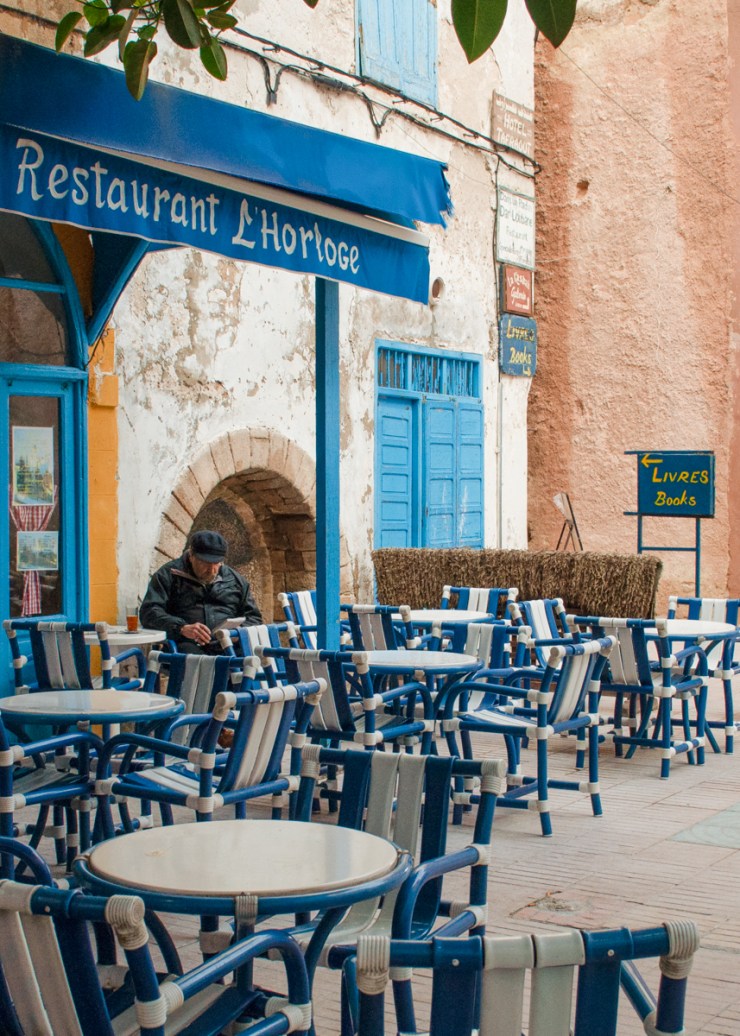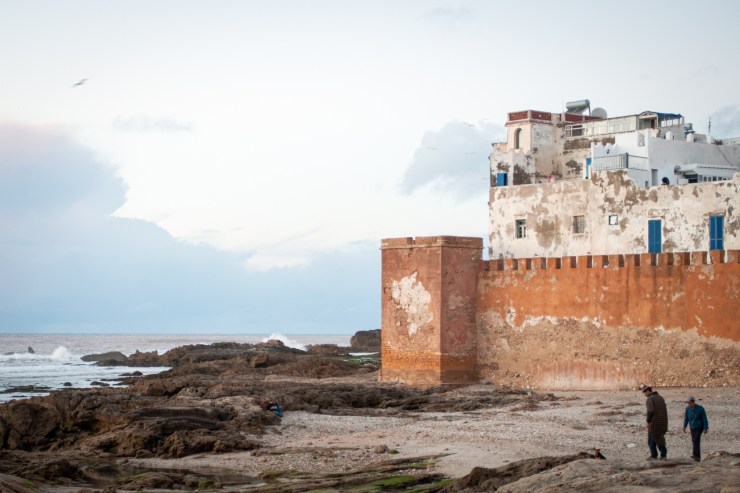If things turn out well, I’ll remember 2020 for the rest of my life as the year that the earth took a smoke break from its perpetual turning and nothing more than that: an isolated event not to repeat itself until we’ve long entered the belly of the next century and when my eyes will have been shut for a while. As I lie, sit, sip my maté, occasionally making the great bounds from balcony to bathroom within the confines of my cozy sixty-six-square-meter box, my mind vaults back to more distant days, when everything first started turning faster than I could catch my breath and the world spun me into the frenzied overture of a great unknown: Morocco.
It was an academic travel, and our guide was our French professor, a lit-loving Lyonnais with an aquiline nose who enjoyed soul-searching parleys on sex, masculinity, and all the liberal arts subjects that made my puritanical cheeks flush with shame and excitement. But the focus of our trip was music, and so, over the course of our two-week tumble across the Western Kingdom, we tuned and stretched our adolescent ears to the rhythms of new and outlandish instruments.


Most days were spent on the road, dashing from one imperial city to another: Marrakesh, Rabat, Meknes, Fez. My memories of them now are more mixed-up than a thirty-six-blend of ras el-hanout on display outside a souk shop. They were a sight to behold, those miniature cardboard cones, dusted with all the colors the Sahara—sabulous ginger, sunburst turmeric, and a multitude of meat and curry rubs. The smells were not always pleasant. Alternating between complex bouquets of spices, sandalwood, and rose water was the repugnant stench of shriveled hide wafting from the tanneries. As we weaved through labyrinthian medinas, the intimidatingly narrow entrails of the city, we held hands and fixed our eyes to the ground, scanning our next steps for puddles and droppings.
By the gate of Bab el-Mansour, beneath the celadon eyes of hundreds of Hands of Fatima, we discovered the unconquerable art of haggling—in French. The paso doble of price negotiations was not a dance suited for amateurs, and I had neither the maneuvers nor the patience to learn its steps. I was relieved to leave the bazaar, holding dearly onto my hard-earned purchase and sole souvenir: a small box of saffron threads.
We zigzagged along the Atlas Mountains, but my mind only recalls snapshots of these moments in between: filing through the North African desert on quad bikes; lathering goops of savon beldi—soap made of olive oil and macerated pits—in the heat of the hammam; and stirring ungodly amounts of sugar into glasses of piping peppermint tea. Up in Azrou, where the chill of winter stilled lingered, a Morocco like I had never imagined yawned and emerged from hibernation. Velds of serene green filled the frame, disrupted only by the occasional whispers of wind that swept across the pastoral landscapes.




At Volubilis and Chellah, we stopped to look at the ruins: a mélange of medieval and Classical mosaics, archways, and bastions, all pleated against one another like fragments of shell and glass washed ashore by waves of warring civilizations. Ages wrapped around the turquoise-tiled minaret of the necropolis like a thin strip of gauze. Peering up to the tower’s overgrown balcony and adorning stork nest, we looked through a fenster of compressed time, out of Morocco, straight onto the Hanging Gardens of Babylon.
The evenings were always filled with music, from Andalusi classical melodies to the mystical and hypnotic Gnawa performances with their signature earsplitting castanets and trancing dancers. We watched, sometimes from chairs, sometimes sat cross-legged in circles around clay pots of couscous and lamb tagine, picking clumps of tender marrow and meat off the bones with our fingers. And when it was all over, we retreated to the privacy of our riads. I took comfort in their high walls, potted palms, and ornate zellige floors. I loved the lulling gurgle of the fountain in the dark of the night and the inner courtyard that flooded with light at the break of each day. It is said that in the past, a woman could count the number of times she left the sanctuary of her family’s riad on her fingers. Times have changed, but these square villas remain gentle oases of peace and quiet inside the cacophonous buzz of the city.
I heaved a sigh in Casablanca. Perhaps it was the name which gripped me, leading me through a waft of nostalgia and sepia flashes of a film I had never seen. Perhaps it was the blinding sight of the opulent Hassan II Mosque. Its wide, palatial spaces jutted out from the promontory in stark contrast to the crowded medina alleyways. Or maybe it was the ocean. There on the beach, digging my toes into the sand for the first time in almost two years, the boundless blue of California’s coast came rushing back to me. Everything about Morocco was unfamiliar, except the feeling of wet sand between my toes in Casablanca.


I was grateful that Essaouira was the last destination on our whirlwind itinerary as it quickly became my coup de cœur, my favorite. Strolling past the French-flavored cafés and the seafront ramparts, we discovered carefreedom: what was it about the ocean that tranquilized men and cities? There was no haggling, no clamor, just the laid-back mind-your-own-beeswax vibe of a seaside town and its sprawling honeycomb of indigo fishing boats, indigo-painted doors, and indigo clouds…
